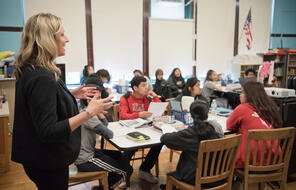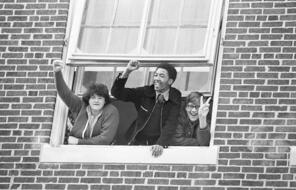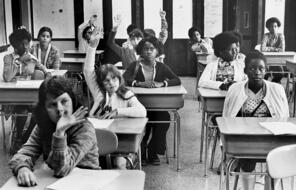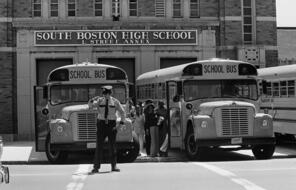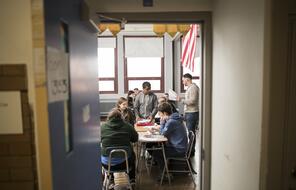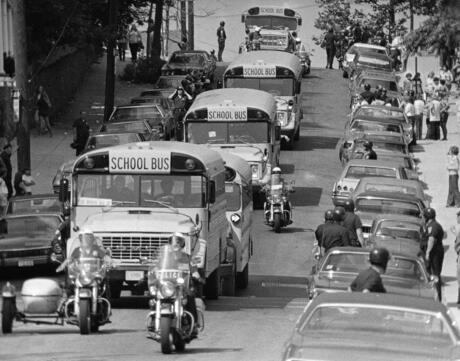
The Pursuit of Educational Justice in Boston
Resources
6Duration
Multiple weeksSubject
- Civics & Citizenship
- Social Studies
Grade
8Language
English — USPublished
Overview
About This Inquiry
When the history of Boston in the 1970s is told in books, films, school curricula, and other media, the narrative is often dominated by what is commonly remembered as the city’s “busing crisis.” This is an inadequate and misleading framing of that time. The issue at the heart of the conflict was desegregation, not busing. The racial violence and tumult in the city in the mid-1970s was the backlash to a decades-long effort by African American Bostonians to desegregate the city’s schools and a 1974 federal court order that affirmed those efforts. As historian Jeanne Theoharis points out, students in Boston had been bused to schools outside of their own neighborhoods for decades, but until the 1970s students were bused to preserve segregation in schools rather than eliminate it. 1 Yet desegregation was not the only issue of educational justice on the minds of Bostonians at that time. Focusing solely on desegregation leaves out the experiences and perspectives of thousands of additional Bostonians with a stake in the city’s public school system during this period, especially Latinx and Chinese American Bostonians.
This C3-style inquiry helps students view the era through a wider lens: one that brings into focus not only the perspectives of poor and working-class African American and white Bostonians but also the city’s Latinx and Chinese American residents. Students will learn about the variety of efforts by African American, Latinx, and Chinese American Bostonians in the 1960s and 1970s to ensure that their children received the education they deserved. In addition to desegregation, students will explore debates over bilingual education and community input in schooling. They will learn about the campaigns, protests, boycotts, and legal actions organized by Bostonians in pursuit of educational justice. Through this wider lens, students will reflect on and develop perspectives on the educational experiences that all students have a right to receive at school. They will also explore questions of power and responsibility as these relate to providing children with fair and equitable educational opportunities. Lastly, students will consider the ways that the biases and blind spots of both individuals and institutions contribute to educational inequity.
As they explore historical and contemporary sources, students will draw connections between the efforts of Bostonians half a century ago and the challenges to equity and justice in schools today. Students will apply lessons and inspiration from these past efforts to today’s ongoing pursuit of educational justice in Boston and across the country.
- 1Jeanne Theoharis, A More Beautiful and Terrible History: The Uses and Misuses of Civil Rights History (Boston: Beacon Press, 2018), 52.
Preparing to Teach
A Note to Teachers
Before teaching this lesson, please review the following information to help guide your preparation process.
Activities
Materials and Downloads
Quick Downloads
Download the Files
Download allGet Files Via Google
Unlimited Access to Learning. More Added Every Month.
Facing History & Ourselves is designed for educators who want to help students explore identity, think critically, grow emotionally, act ethically, and participate in civic life. It’s hard work, so we’ve developed some go-to professional learning opportunities to help you along the way.
Exploring ELA Text Selection with Julia Torres
On-Demand

Working for Justice, Equity and Civic Agency in Our Schools: A Conversation with Clint Smith
On-Demand

Centering Student Voices to Build Community and Agency
On-Demand


